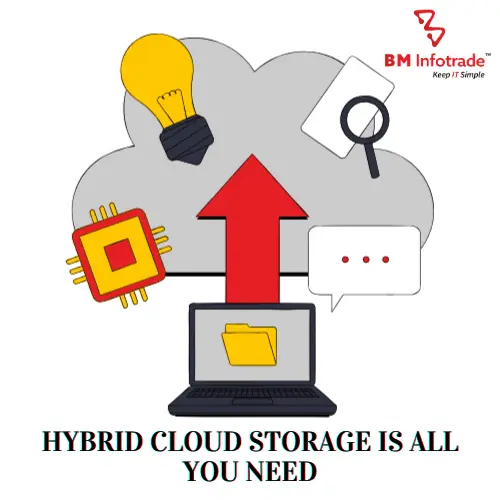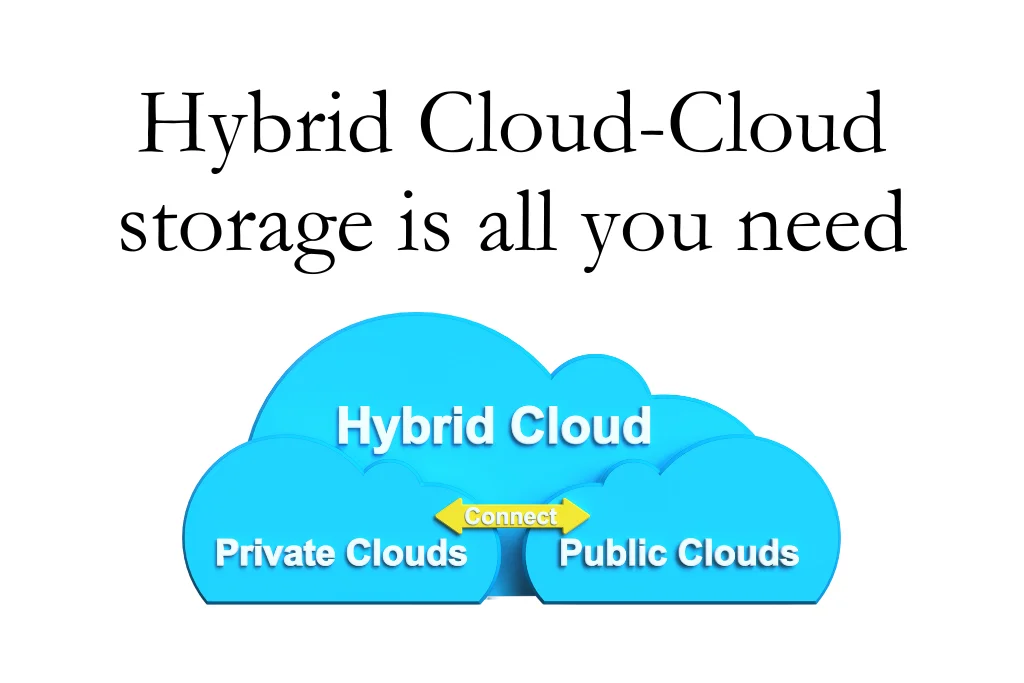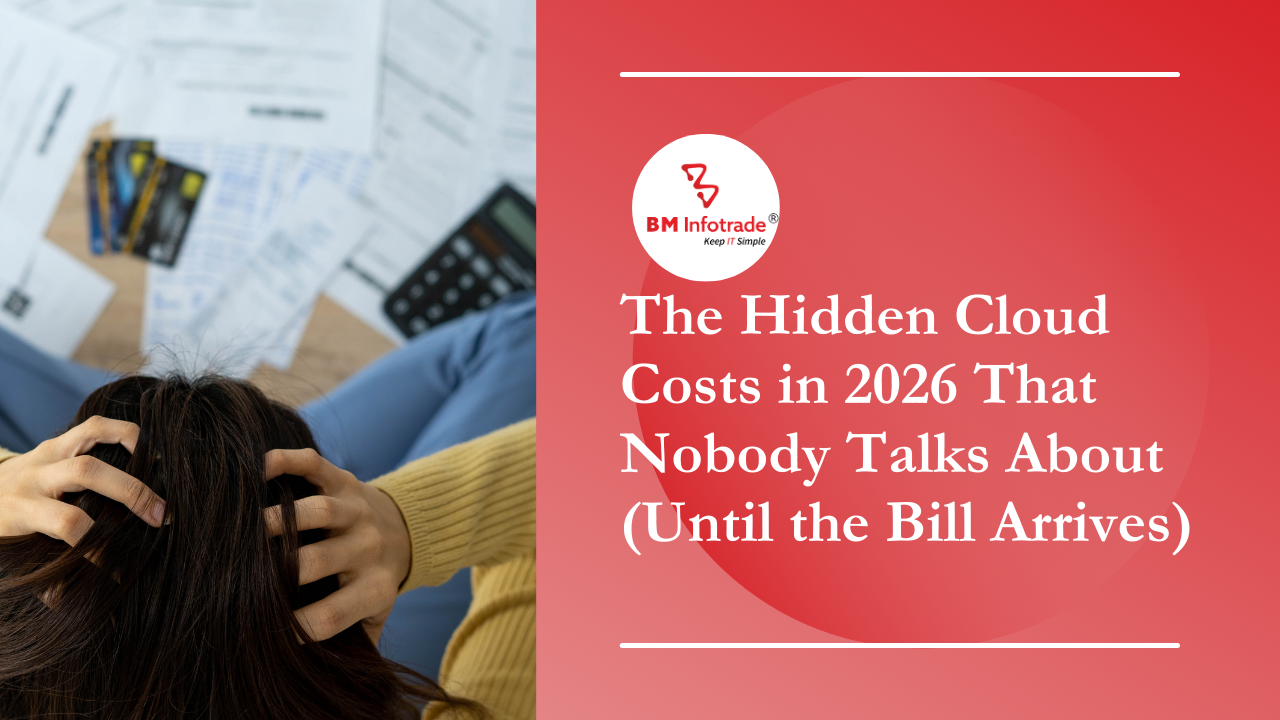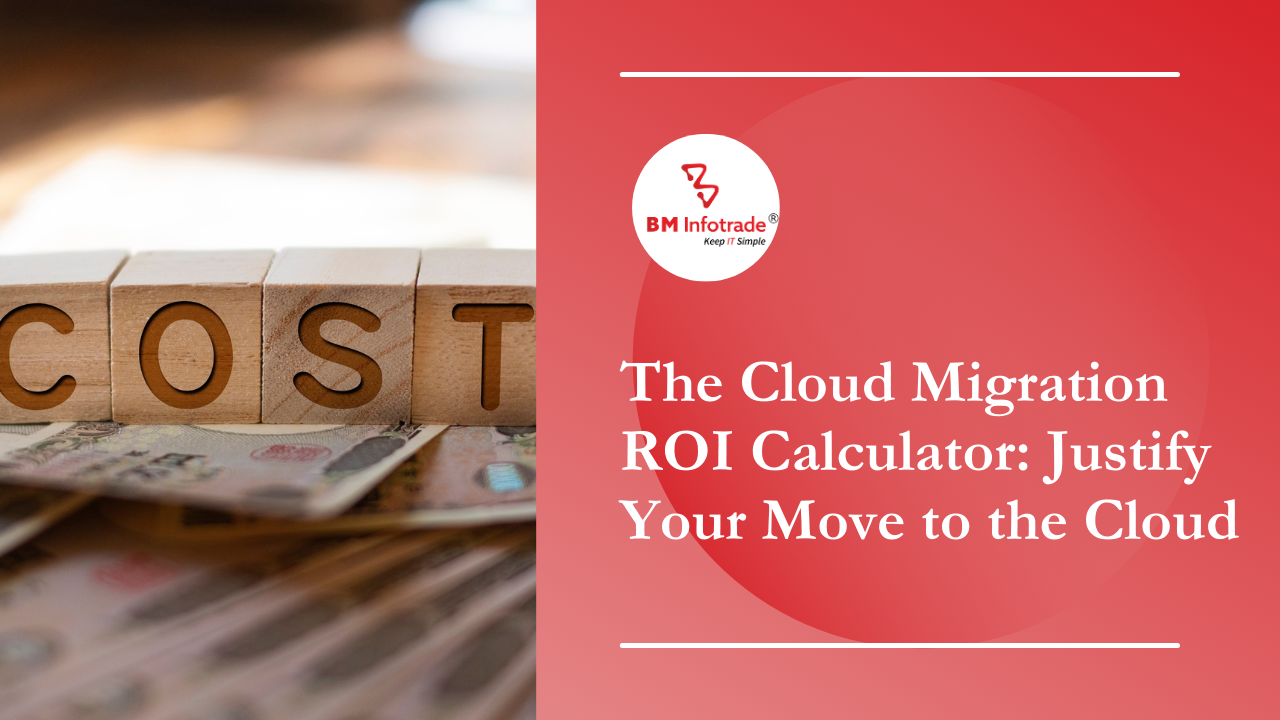Hybrid Cloud-Cloud storage is all you need
Explore how hybrid cloud solutions can meet all your cloud storage needs. Learn about the benefits of combining public and private clouds for optimal performance and security.

Hybrid Cloud-Cloud storage is all you need
Hybrid Cloud Computing Definition
Table of Contents
A hybrid cloud is a mixed computing, storage, and service environment that combines on-premises infrastructure, private cloud services, and a public cloud (like Amazon Web Services (AWS) or Microsoft Azure) with orchestration between the different platforms. If you combine public clouds, on-premises computing, and private clouds in your data center, you have a hybrid cloud infrastructure.
Hybrid cloud solutions, which provide a single, seamless pool of resources, can support modern application strategies and an organization's efforts to undergo digital transformation. The majority of organizations have adopted hybrid cloud infrastructure to reduce risk, lower overall IT and cloud costs, support cloud migration without refactoring, consolidate data centers, and meet business needs.
How does a hybrid cloud function?
Data and application workloads can move seamlessly between platforms and share data among application workloads when hybrid clouds combine public and private clouds into a single entity. Data and workload virtualization, network function virtualization (NFV) or VPNs, and connectivity to one or more cloud providers are used to achieve this.
Consider these benefits of hybrid clouds, among many others:
Data and application workloads can move seamlessly between platforms and share data among application workloads when using hybrid clouds, which combine public and private clouds into a single entity. Data and workload virtualization, network function virtualization (NFV) or VPNs, and connectivity to one or more cloud providers are used to achieve this.

Read more: The Importance of Backup and Recovery.
The benefits of hybrid clouds:
Changing the workload. Access cloud-native services from the new cloud environment while migrating workloads quickly and without refactoring using well-known tools and procedures.
Help modernize applications-
Employing hybrid cloud technology, businesses can continue to run virtual machine-based workloads on the same cloud platform while also developing and deploying microservices and container-based applications.
Boost scalability-
Employing well-known tools and procedures, businesses can quickly take advantage of the agility and scale of public cloud providers.
Maintain compliance and security requirements. Every application in a hybrid cloud is connected to security policies, ensuring uniform application across all deployment and management environments.
Reduce the workload for IT-
Organizations can handle more requests while relieving IT staff of tedious repetitive tasks like spinning up new VMs or containers by allowing developers and line-of-business (LOB) application owners to self-serve in on-site and public cloud environments.
Scale back on the complexity-
IT can streamline operations with a single operating model across all environments to optimize the mix of capital and operating expenses, reduce operating and security risk, and improve operational efficiency while avoiding silos and skills gaps.
Increase the value of clouds-
An organization can enhance its on-premises cloud capabilities and transition from siloed infrastructure-oriented operations to a service-based model that provides the same services wherever applications are deployed thanks to hybrid infrastructure.
How do hybrid cloud platforms work?
Hybrid cloud platforms are built around hybrid cloud management tools, which make sure that both public and private cloud components are collaborating to meet the desired business objectives.
Here are a few popular hybrid orchestration models:
Customer managed:
Hyperconverged infrastructure is frequently used to deploy private cloud solutions in on-premises and edge environments. More and more, these solutions' core components are offered as SaaS services.
Vendor managed:
Vendors can deploy and manage hybrid solutions as fully hosted hardware and software solutions in data centers and edge environments.
Partner managed:
A variety of cloud and hosted infrastructure providers offer hybrid cloud solutions, and they all have operations and infrastructure that are compatible with private cloud solutions that are installed on-site.
Cloud provider-managed:
Hyperscale cloud providers offer both solutions built on a foundation of consistent infrastructure and operations and compatible with private cloud solutions, in addition to a standard cloud service portfolio. Hyperscale cloud providers are those who manage the cloud.
Do you need a hybrid cloud?
Because not everything belongs in the public cloud, so many progressive businesses are utilizing a hybrid mix of cloud services. Hybrid clouds utilize the architecture already present in a data center while providing the advantages of both public and private clouds.
The hybrid approach enables interoperability between cloud instances, even between architectures, and boundaries (for instance, cloud versus on-premises) (for example, traditional versus modern digital). Data also requires the same level of distribution and access flexibility. In the dynamic digital world, whether you're managing workloads or datasets, you should prepare for things to move around in response to changing needs.
Your on-premises data center, private cloud resources, and public cloud workloads are linked together under a common data management system while remaining separate in a hybrid cloud architecture. You can link up existing, conventionally built systems that run mission-critical software or house private data that might not be appropriate for public cloud computing. A data fabric, which employs a software-defined methodology to provide a common set of data services across any combination of IT resources, is what makes hybrid cloud infrastructures possible.
Read more: What is Private Cloud… Start your cloud journey
Conclusion
A hybrid cloud combines the functions of an off-premises public cloud and an on-premises private cloud. With this service, you can maximize your current IT investments while having access to more resources as needed.
The growing ambiguity between traditional types of clouds is reflected in the concept of hybrid clouds, which is on the rise. Early public and private clouds could be separated by ownership and location, with private clouds being managed locally by the party using the services while public clouds were operated off-site by third-party providers.





![Cloud Licensing and Compliance Made Easy [All-in-One Bundle]](https://bminfotrade.com/assets/upload/blog/21851766642757.png)

Anshul Goyal
Group BDM at B M Infotrade | 11+ years Experience | Business Consultancy | Providing solutions in Cyber Security, Data Analytics, Cloud Computing, Digitization, Data and AI | IT Sales Leader